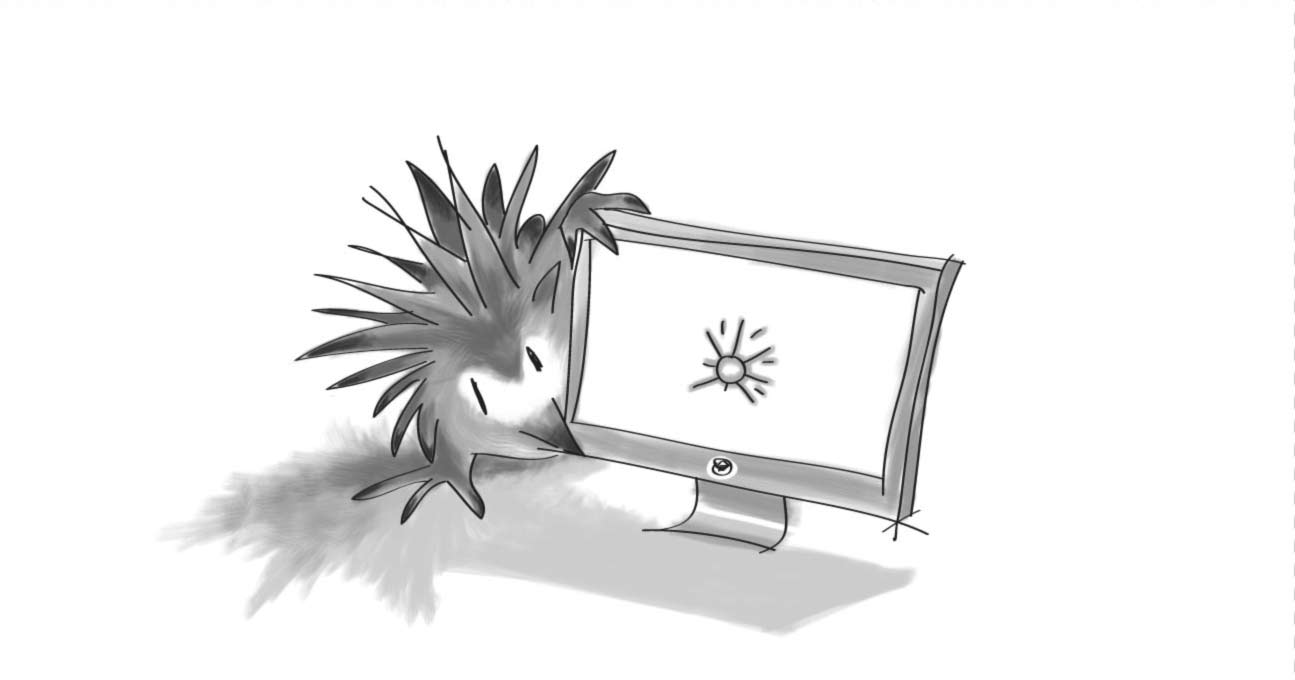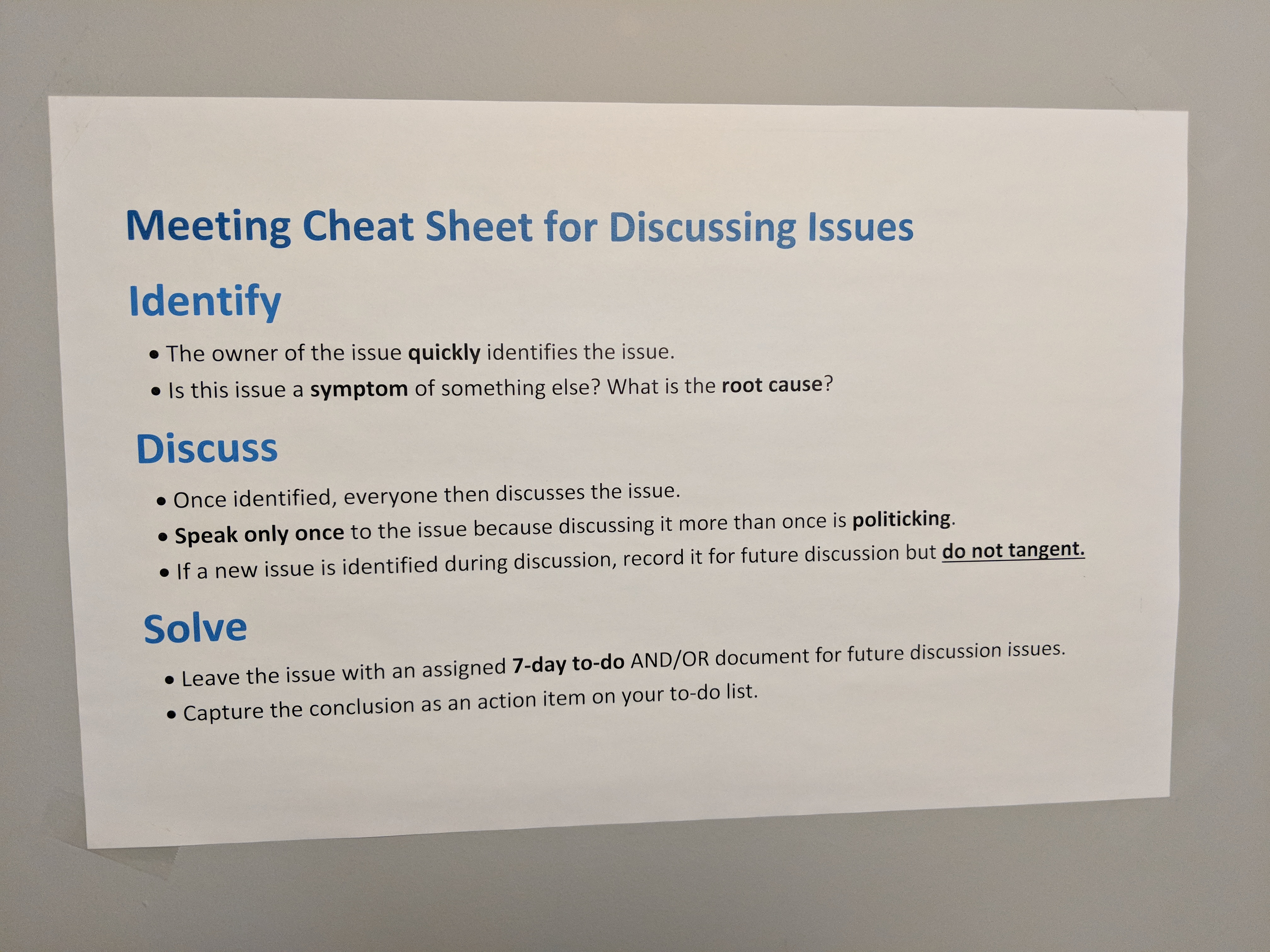Our EOS Journey To Date: 5 Things To Know

Last week, the management team participated in their last EOS® planning session, thus ending our two year engagement with implementer, Preston True.
Thanks to EOS® system (Entrepreneurial Operating System), quite a lot of things have changed around here. Not only are there these great ‘identify, discuss, solve’ meeting cheat sheets posted in every meeting room and buzz words or phrases like “L10”, “traction” and, “let’s IDS it” peppered in conversation, but our very structure and system of planning, is different.
I asked Andrew McClenaghan, the president of Digital Echidna, five questions about the EOS journey.
How did you learn about EOS®?
At an Owners Summit in Atlanta, someone in the audience yelled out “EOS!” in response to a discussion around business systems. I wrote it down. Upon returning home I purchased the book, Get a Grip, by Gino Wickman. It’s the fictional story of an entrepreneur who ends up using EOS® in her business. It was like reading an autobiography of Echidna, and it resonated with me greatly. I ended up reading his next book - Traction. And then I read the other one, How to be a Great Boss. Apparently you are supposed to read Traction first. But either way, I liked the idea of delivering a better balance of life to company owner and leaders.
Why EOS® for Digital Echidna?
Over the past several years, the Digital Echidna brand has taken on a life of its own with a diverse mix of talented and engaged staff. As other people here take the lead on sales, client services, and project delivery, most clients don’t even know who I am, nor have reason to even meet me. Way different from the early days, that is for sure. And as an introvert, I love it, it’s great. But as we were bringing up more and more senior level leaders, I saw a need for a change in both structure and a need to refine how we communicate with each other. I wanted to continue to grow without losing quality of service and delivery to clients, and without losing sight of the core values that are central to Digital Echidna. EOS® is a proven system of management communications, processes, goal setting, and business operations that put core values central.
When did you start, and how did you know you were done?
We started with an EOS® implementer. Implementers are certified coaches that are trained in EOS®. Ours worked with us for two years and led us through two annual planning sessions and eight quarterly retreats. The foundation of EOS® is the development and implementation of a culture of accountability. As the owner of a business starting to use EOS®, I thought it might be too easy for me, if left to my own devices, to default to what I feel is “comfortable” for the business, rather than what’s right for the business. Maybe even run the risk of not having as much buy in from my executive team. With an implementer as the facilitator, I got to be fully present in thinking about the issues, ideas, and vision. It certainly held me accountable and gave me the tools for pushing out EOS® throughout the company. Preston, for his part, kept us on track, accountable, and telling the truth.
Of course, you don’t need a certified coach. You can discover and implement EOS on your own. A lot of the tools and exercises are available online or in the books.
When will we know we are done? Probably never. We will still be discovering and learning about how to leverage EOS® as our business operating system for many more years to come. There’s so much growth opportunity when it comes to being a better business.
What is the hard part?
Once you master EOS® at the leadership team level, then you have to get each department or project team to live by the same system. It takes some time for each department to learn the new way and determine their KPIs and scorecards. Missing goals can also be hard. You really have to think - is this the issue or is it a symptom of the issue? What is the real reason we keep missing this goal? Other times EOS® makes it clear someone isn’t a fit and needs to be moved to another role or even leave the company. The whole “wrong person, wrong seat”. That’s never great.
Rocks are also difficult, at first. Rocks are 90 day goals that are related to personal, professional or organizational department development and growth. Employees make their own rocks, and take ownership and accountability for reaching that rock, with encouragement and advice from their manager. It is easy to make too many rocks, or choose the wrong ones. If you miss reaching your rock, it is everyone’s problem.
Any EOS® tips or tricks?
First, if you are interested in learning about EOS®, read these books: Get a Grip, by Gino Wickman; Traction, by Gino Wickman and Mike Paton; and How to be a Great Boss, by Gino Wickman.
Second, the need for an operating system usually becomes apparent after a company grows beyond 10-20 full time employees. I started late - about 45 employees.
Third, it is a lot of work. But what will be especially helpful almost immediately, will be the formulaic weekly routines that keep your whole company focused on moving forward towards measurable goals.
Conclusion
Thank you, Andrew, for sharing your knowledge. Now, to my readers - are you thinking about using EOS? Want to borrow the books from us, or have questions? Contact Andrew at [email protected]. Who knows? Before long, you too might have these great posters up in your meeting rooms:

SUBSCRIBE TO OUR E-NEWSLETTER
 Subscribe
Subscribe


